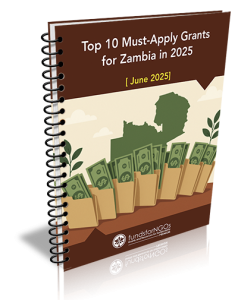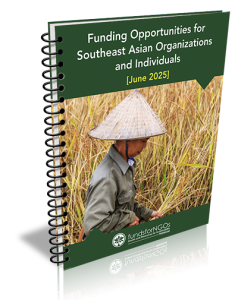The United States Agency for International Development, commonly known as USAID, stands as a pivotal institution in the realm of international development and humanitarian assistance. Established in 1961, USAID was born out of a vision to foster global stability and prosperity through targeted aid and development programs. Its mission is to promote democratic governance, economic growth, and social progress in developing countries, thereby enhancing the quality of life for millions around the globe.
With a budget that often exceeds $20 billion annually, USAID operates in over 100 countries, addressing a myriad of challenges ranging from poverty alleviation to health crises, and from education to environmental sustainability. The agency’s multifaceted approach combines direct assistance with capacity building, ensuring that the benefits of its programs are sustainable and impactful. USAID’s work is not merely about providing financial resources; it embodies a commitment to fostering partnerships and empowering local communities.
By collaborating with governments, non-governmental organizations (NGOs), and private sector entities, USAID seeks to create a holistic framework for development that is responsive to the unique needs of each country. This collaborative ethos is reflected in its strategic initiatives, which prioritize local ownership and participation. As the world grapples with complex challenges such as climate change, pandemics, and geopolitical tensions, USAID’s role has become increasingly vital.
The agency not only responds to immediate crises but also invests in long-term solutions that aim to build resilience and self-sufficiency among vulnerable populations.
USAID’s role in promoting global development
USAID plays a crucial role in promoting global development through a comprehensive array of programs designed to address the root causes of poverty and inequality. By focusing on sectors such as education, health, agriculture, and economic growth, the agency aims to create an environment where individuals can thrive and communities can prosper. For instance, in the education sector, USAID invests in initiatives that improve access to quality education for children in underserved areas, recognizing that education is a fundamental driver of economic development and social mobility.
Through partnerships with local governments and educational institutions, USAID implements programs that enhance teacher training, develop curricula, and provide essential resources to schools, thereby laying the groundwork for a more educated workforce. Moreover, USAID’s commitment to economic growth is evident in its support for small and medium-sized enterprises (SMEs) in developing countries. By providing technical assistance, access to finance, and market linkages, USAID empowers entrepreneurs to create jobs and stimulate local economies.
This focus on inclusive economic growth not only helps lift individuals out of poverty but also fosters stability and resilience within communities. Additionally, USAID recognizes the importance of gender equality in development; thus, it actively promotes women’s empowerment through targeted programs that enhance women’s access to education, healthcare, and economic opportunities. By addressing gender disparities, USAID contributes to more equitable societies where all individuals can contribute to and benefit from development efforts.
USAID’s role in providing humanitarian assistance
In addition to its development initiatives, USAID is a key player in providing humanitarian assistance during crises and emergencies. The agency responds swiftly to natural disasters, armed conflicts, and public health emergencies by delivering life-saving aid to affected populations. Through its Office of U.S. Foreign Disaster Assistance (OFDA), USAID coordinates disaster response efforts, mobilizing resources and expertise to ensure that aid reaches those in need as quickly as possible. This includes providing food assistance, medical care, shelter, and clean water—essential services that can mean the difference between life and death in times of crisis. USAID’s humanitarian efforts are guided by principles of neutrality, impartiality, and humanity. The agency works closely with international organizations such as the United Nations and various NGOs to assess needs on the ground and implement effective response strategies. In recent years, USAID has faced unprecedented challenges due to the increasing frequency and intensity of natural disasters exacerbated by climate change, as well as protracted conflicts that displace millions of people. In response to these challenges, USAID has adapted its approach by integrating resilience-building measures into its humanitarian programs. This means not only addressing immediate needs but also helping communities recover and rebuild in ways that reduce their vulnerability to future shocks.
USAID’s impact on global development and humanitarian assistance
The impact of USAID’s work on global development and humanitarian assistance is profound and far-reaching. Over the decades, the agency has contributed significantly to reducing poverty rates, improving health outcomes, and enhancing educational opportunities worldwide. For instance, USAID’s investments in global health initiatives have played a crucial role in combating infectious diseases such as HIV/AIDS, malaria, and tuberculosis.
Through targeted interventions like vaccination campaigns and health education programs, millions of lives have been saved or improved. The agency’s focus on maternal and child health has also led to significant reductions in maternal and infant mortality rates in many developing countries. In terms of humanitarian assistance, USAID’s rapid response capabilities have been instrumental in saving lives during crises.
The agency’s ability to mobilize resources quickly ensures that affected populations receive timely support when they need it most. For example, during the Ebola outbreak in West Africa, USAID was at the forefront of the response effort, providing critical funding for healthcare infrastructure and community education initiatives that helped contain the virus’s spread. Furthermore, USAID’s emphasis on building local capacity means that its interventions often lead to lasting improvements in community resilience.
By equipping local organizations with the skills and resources needed to respond to future challenges, USAID fosters a sense of ownership among communities that ultimately enhances their ability to thrive independently.
Challenges faced by USAID in promoting global development and providing humanitarian assistance
Despite its significant contributions to global development and humanitarian assistance, USAID faces numerous challenges that can hinder its effectiveness. One major obstacle is the complex political landscape in many countries where it operates. Political instability, corruption, and governance issues can impede the implementation of development programs and limit their impact.
In some cases, local governments may lack the capacity or willingness to collaborate effectively with USAID, leading to delays or inefficiencies in project execution. Additionally, geopolitical tensions can complicate aid delivery; for instance, sanctions or diplomatic disputes may restrict access to certain regions or populations in need. Another challenge is the increasing frequency of crises driven by climate change and natural disasters.
As extreme weather events become more common, USAID must adapt its strategies to address both immediate humanitarian needs and long-term resilience building. This requires not only financial resources but also innovative approaches that integrate climate adaptation into development planning. Furthermore, the agency must navigate the complexities of coordinating with various stakeholders—governments, NGOs, international organizations—each with their own priorities and agendas.
Balancing these interests while maintaining a focus on effective aid delivery can be a daunting task.
USAID’s partnerships and collaborations in promoting global development and humanitarian assistance

Collaboration for Sustainable Development
Partnerships are at the heart of USAID’s approach to promoting global development and humanitarian assistance. The agency recognizes that collaboration with diverse stakeholders is essential for achieving sustainable outcomes. By working alongside local governments, NGOs, private sector actors, and international organizations, USAID leverages collective expertise and resources to maximize impact.
Public-Private Partnerships for Innovative Solutions
For example, through public-private partnerships (PPPs), USAID has been able to tap into innovative solutions from the private sector while ensuring that development goals remain at the forefront of these collaborations. Moreover, USAID actively engages with local communities to ensure that their voices are heard in the design and implementation of programs. This participatory approach not only enhances program relevance but also fosters trust between aid providers and recipients.
Empowering Local Organizations and Leaders
By empowering local organizations and leaders, USAID helps build a foundation for sustainable development that extends beyond its direct interventions. Additionally, partnerships with academic institutions facilitate research and knowledge sharing that inform best practices in development programming. These collaborative efforts are crucial for addressing complex global challenges effectively.
Future of USAID in promoting global development and humanitarian assistance
Looking ahead, the future of USAID in promoting global development and humanitarian assistance will likely be shaped by several key trends and priorities. As the world continues to grapple with pressing issues such as climate change, inequality, and health crises exacerbated by pandemics like COVID-19, USAID will need to adapt its strategies accordingly. Emphasizing resilience-building will be paramount; this means not only responding to immediate needs but also investing in long-term solutions that empower communities to withstand future shocks.
Furthermore, technology will play an increasingly important role in USAID’s work. The agency is already leveraging digital tools for data collection, program monitoring, and communication with beneficiaries. As technology continues to evolve, USAID will need to harness innovations such as artificial intelligence and big data analytics to enhance decision-making processes and improve program effectiveness.
Additionally, fostering inclusive partnerships will remain a priority; engaging diverse stakeholders—including marginalized communities—will be essential for ensuring that development efforts are equitable and responsive to local needs. In conclusion, USAID stands as a vital force in promoting global development and providing humanitarian assistance across the globe. Its multifaceted approach—rooted in collaboration with local partners—ensures that its interventions are both effective and sustainable.
While challenges persist in this complex landscape of international aid, the agency’s commitment to innovation and inclusivity positions it well for future success as it continues its mission to improve lives around the world.
For those interested in the initiatives supported by the United States – Agency for International Development (USAID), a relevant article discusses the Safety Net Grant Program in the United States. This program aims to provide support to organizations working to assist vulnerable populations. It is an excellent example of how USAID is involved in enhancing the welfare and security of individuals within the United States, complementing its international efforts. You can read more about this initiative and how it contributes to community support by visiting the following link: Safety Net Grant Program – United States.
FAQs
What is the United States Agency for International Development (USAID)?
The United States Agency for International Development (USAID) is the lead U.S. government agency that works to end extreme global poverty and enable resilient, democratic societies to realize their potential.
When was USAID established?
USAID was established on November 3, 1961 by the Foreign Assistance Act.
What is the mission of USAID?
The mission of USAID is to partner to end extreme poverty and to promote resilient, democratic societies while advancing our security and prosperity.
What are the main areas of focus for USAID?
USAID focuses on areas such as global health, food security, education, economic growth, democracy and governance, and humanitarian assistance.
How does USAID operate?
USAID operates in more than 100 countries and works with local governments, civil society organizations, private sector partners, and other U.S. government agencies to implement its programs and initiatives.
What is the budget of USAID?
The budget of USAID varies from year to year, but it is a significant portion of the U.S. foreign assistance budget, which is allocated by the U.S. Congress.








































